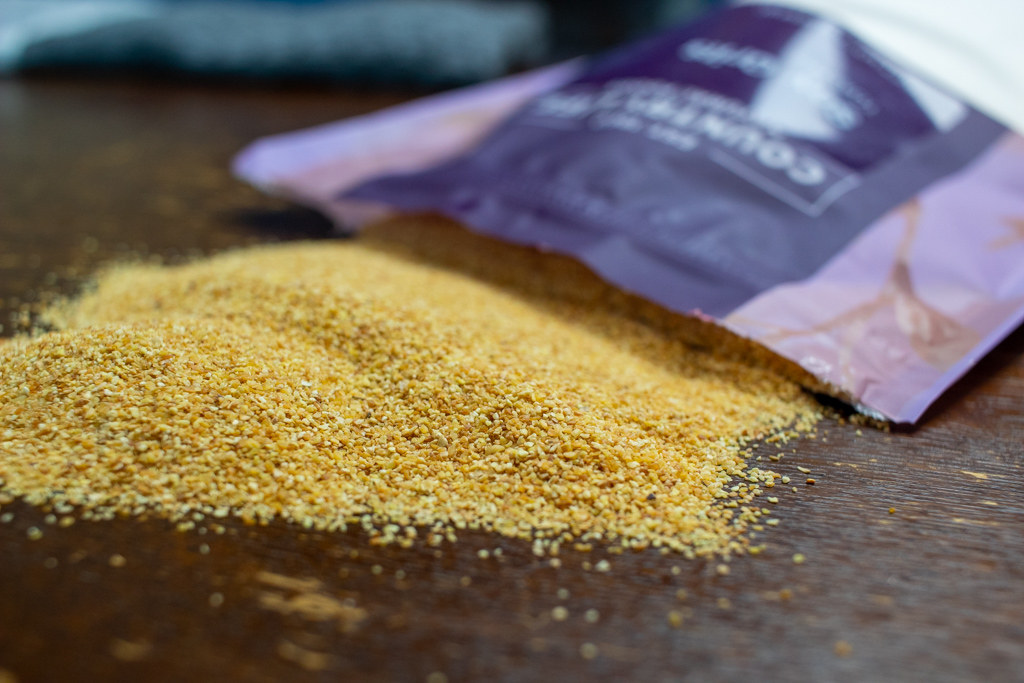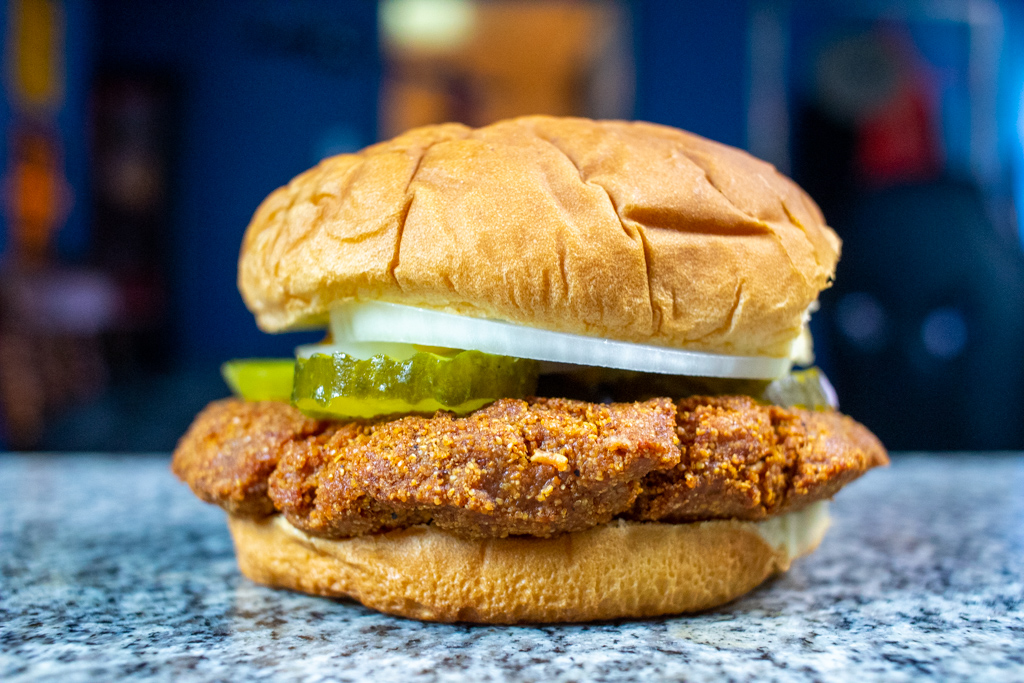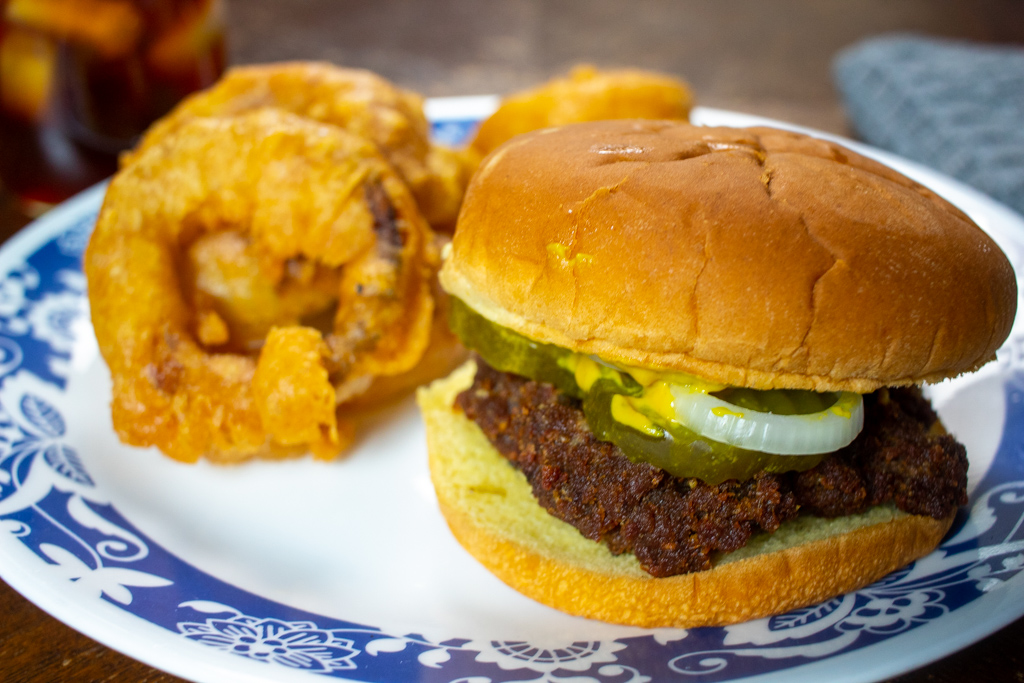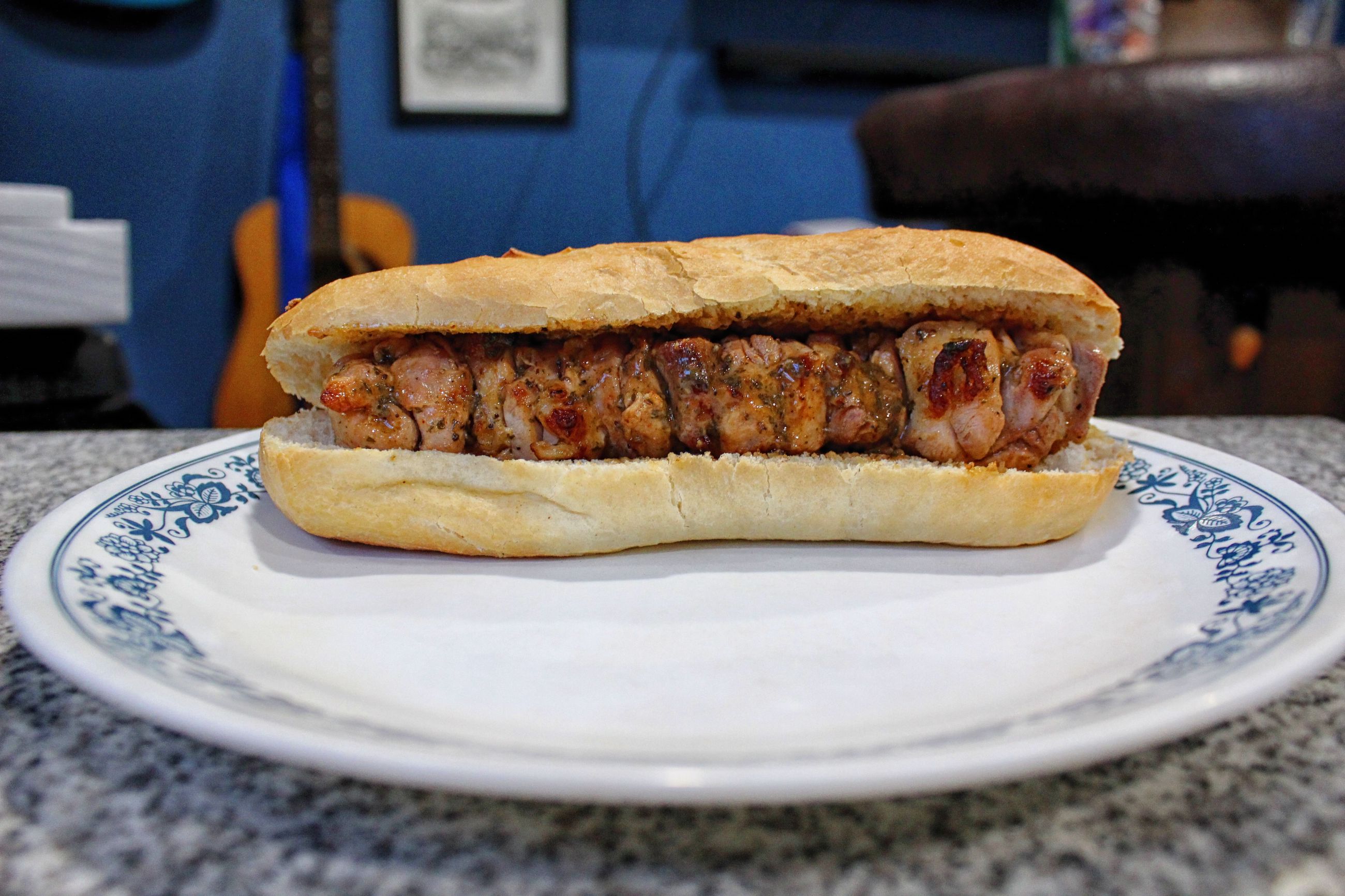A Garden Variety Sandwich: Mississippi’s Slugburger
Hard times make for tight fists. They say necessity is the mother of invention, but if so it’s the kind of mother who tells you “We have McDonald’s at home.” In the absence of wheat flour, people make cornbread. In the absence of butter, people use lard, or margarine, or whatever cheap spread is handy. When meat is scarce, a bean sandwich can seem like heaven. And when you do get some of the good stuff, well, you have to make it last. It’s been almost a century since a market crash in the US kicked off the worldwide economic downturn we call the Great Depression but many of the tricks people used to get by in those times caught on and are still with us.
In 1917, well before flocks of flightless financiers darkened the Wall Street skies with their terminal plummets*, a man named John Weeks moved to Corinth, Mississippi from Chicago and started doing business out of a little rolling shack he built, just big enough for a man, a pan, and a burger-selling plan. He had local butchers grind the meat for him, asking them to extend it according to his recipe, with some flour, some dried mashed potato flakes. He deep-fried the burgers he made from this meat mixture in rendered lard and sold them cheap, calling them Weeksburgers.
* There was no rash of suicides following the market crash in 1929–that is part of the legend of the Great Depression
How cheap did he sell them? History does not record. It was not until years later that the name slugburgers caught on, based not on any perceived textural deficiency of the extended burgers, or on any suspicious of their content, but based, perhaps apocryphally, on their price. “Slug” is not only the name for a type of snail without a shell but has been used since the 19th Century to describe counterfeit coins. At some point this meaning was extended to include the American 5 cent piece otherwise called a nickel, and Corinth town lore says that the Weeksburger went for a nickel apiece during the Depression, hence the name. Incidentally, though the term “slugburger” centers mostly around Corinth in northern Mississippi, Elvis Presley enjoyed a similar treat called a “doughburger” growing up in his hometown of Tupelo, 50 miles south.
The website What’s Cooking America quotes Willie Weeks, nephew of John Weeks and owner of the now-defunct Weeks Diner in Booneville, Mississippi, on the original and the modern recipes for slugburgers, and nearly every other website that talks about them echoes this quote–I suppose I’ll join the club.
The original recipe called for potato flakes as the extender. Sometime later, before 1950, soy grits replaced that and has remained the essential ingredient of Weeksburgers.

Soy grits, tiny irregular bits of ground soybean, lightly toasted, have a far different texture and flavor as a meat extender than mashed potato flakes would, of course. Additionally, though the meat of choice originally was ground beef, the cheaper pork is the go-to option in the slugburgers of today. Which to try? Why not both?
Uncooked, here they are, side by side, the slugburger of today against the Weeksburger of antiquity. That’s the modern model on the left, ground pork mixed with soy grits, seasoned with salt, black pepper, garlic powder, and a little paprika. To your right you’ll find the primordial Mississippi burger, ground beef mixed with mashed potato flakes, seasoned simply with sea salt and black pepper.


The new-school patty with pork and soy grits maintained its shape better in the hot oil–the potato flakes may not have been mixed in thoroughly enough, though it sure seemed like I spent a good amount of time working them into the meat. In any case, once fried, the pork patty had a relatively flat round shape much the same as it had before frying, while the beef patty shrunk in some parts and thickened in others, resulting in an oddly twisted, cavity-pocked appearance.


Of course both are served the same–a plain cheap hamburger bun that is steamed, not toasted, with mustard, onion, and pickles.


Unfortunately, while I measured the meats by weight, I made the mistake of measuring the extenders by volume. Soy grits are far denser than dried potatoes. Additionally, the ground beef I used was an 80/20 lean-to-fat ratio, and the dried potato extender did a fine job of soaking up any fat that rendered, making the beef slugburger a much juicier sandwich. The relatively lean pork combined with the soy grits to make a drier patty.

Still, the pork seasoning was good, and if it was done correctly I could see the pork slugburger being reminiscent of a fritter-style fast-food “pork tenderloin” that’s made from a breaded patty of ground pork instead of a pounded-out loin. It’s even served the same, in a soft hamburger bun dressed with pickles, onion, and mustard.

On this occasion though, the beef slugburger was the winner. Though the seasoning was plainer, the fattier meat, with a filler that more capably retained the meat’s juices and a more favorable meat-to-filler ratio, made for a juicier, more enjoyable burger, and one that deserved to be served alongside some homemade beer-battered onion rings and a glass of ice-cold sweet tea.



A trip to Mississippi would surely answer any lingering questions I have about the slugburger–and whether a stop in Corinth is involved or not, I surely intend to get back to Jackson one day for some more soul food and pig ear sandwiches. For now I’m ready to move on. Another month approaches, with more sandwiches to stand before the Tribunal, and we do intend to be one court that will never let you down. See you in July!

I like sandwiches.
I like a lot of other things too but sandwiches are pretty great





Recent Comments